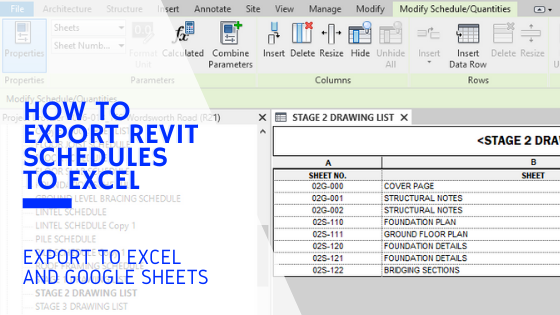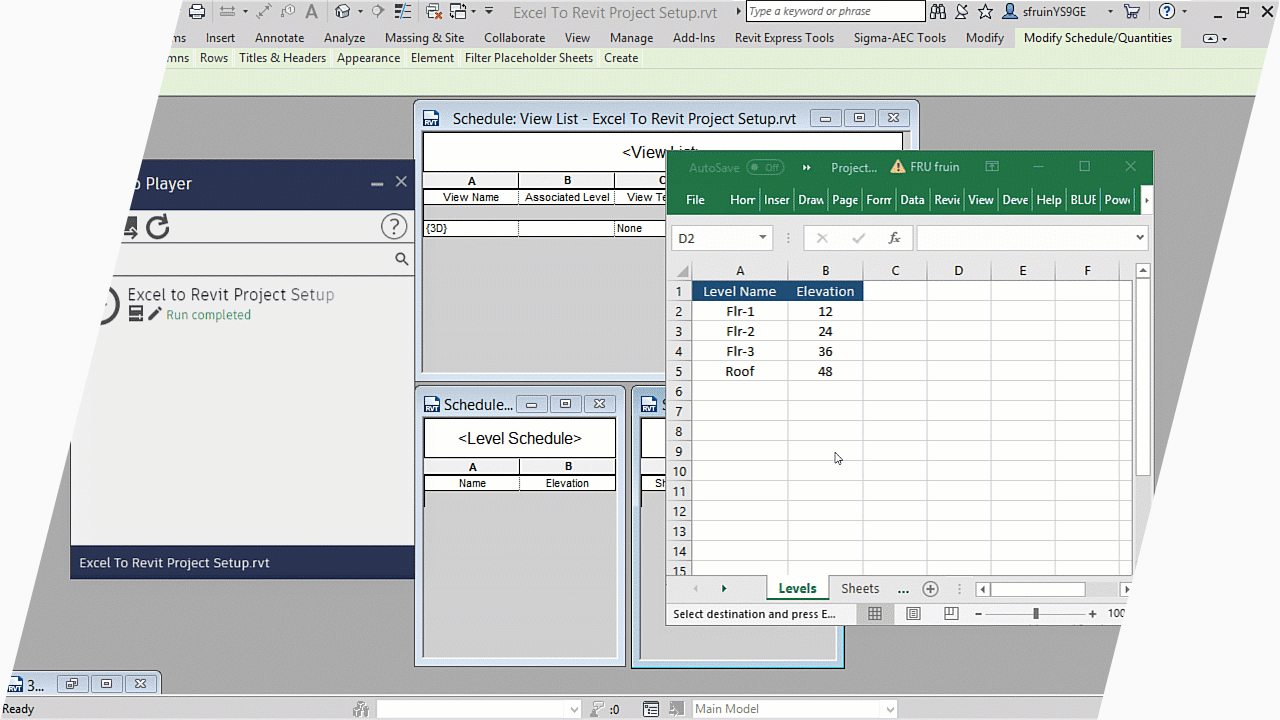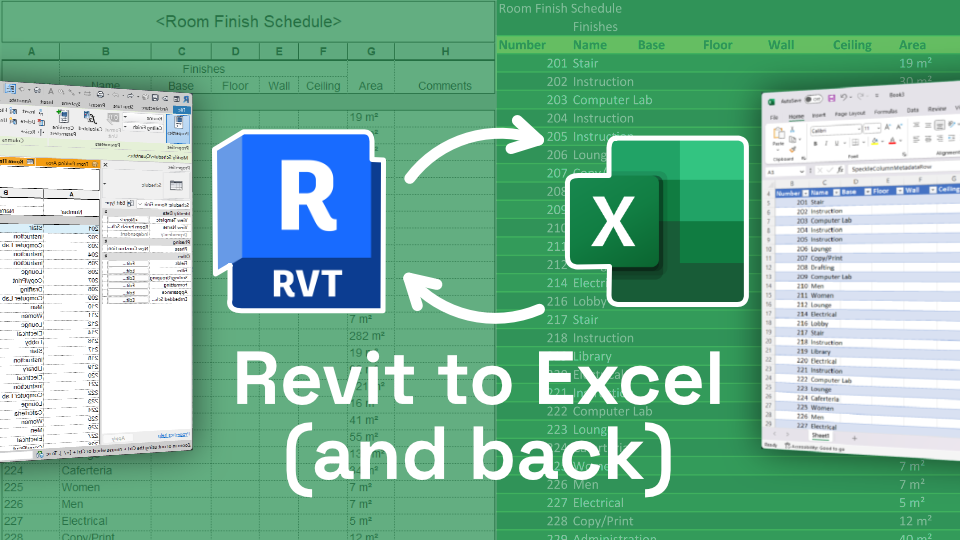Unlock New Possibilities with Innovative Revit Plugins
Wiki Article
Excel-to-Revit: A Game-Changing Operations for Architectural Layout - Unveiling the Secrets
Presenting excel-to-revit, the game-changing process that will transform your style process. With excel-to-revit integration, you can streamline your architectural design, unlock efficiency, and make the most of collaboration within your team. Obtain ready to take your architectural layout to the following degree with excel-to-revit!The Power of Excel-to-Revit Assimilation

Picture the convenience of having the ability to modify and update task information in Excel, and instantaneously see those modifications reflected in your Revit version. Say goodbye to manual information entry or laborious updates. With Excel-to-Revit integration, you can save time and lower mistakes by leveraging the power of Excel's solutions and features to immediately create precise data in Revit.
Not just does this assimilation enhance effectiveness, yet it likewise boosts partnership amongst team participants. You can quickly share Excel documents with associates, that can then import the information into their Revit designs. This advertises a seamless exchange of details and guarantees that every person is working with one of the most up-to-date data.

Improving Building Style With Excel-To-Revit
Simplifying architectural layout is made easier with the use of Excel-to-Revit (revit tools). With this effective assimilation, you can maximize your operations and conserve valuable time throughout the design process. By leveraging the capabilities of Excel and Revit, you can perfectly transfer data between the two platforms, getting rid of the requirement for hand-operated data entrance and reducing the risk of mistakesExcel-to-Revit permits you to import and export data effortlessly, allowing you to conveniently update and modify your building layouts. You can create schedules, determine amounts, and generate records in Excel, and after that transfer that data directly right into your Revit version. This integration guarantees that your style details is always updated and integrated, removing the need for manual updates and minimizing the opportunities of inconsistencies.
By using Excel-to-Revit, you can also benefit from the effective computational abilities of Excel. You can execute intricate calculations, evaluate data, and automate repeated jobs, all within Excel. Then, with just a few clicks, you can import the results back into Revit, allowing you to make educated layout choices and maximize your building layouts.
Opening Effectiveness: Checking Out the Excel-to-Revit Process
Maximize your productivity by seamlessly integrating Excel and Revit for an extra efficient operations. With the Excel-to-Revit operations, you can open an entire brand-new level of efficiency in your architectural layout procedure. By making use of the power of Excel's data management capabilities and combining it with the adaptability and accuracy of Revit, you can improve your style process and conserve useful time.One of the essential benefits of this integration is the capacity to import and export information between Excel and Revit. This means that you can conveniently move project information, such as area routines or material amounts, from one software program to the various other, getting rid of the need for hand-operated information entry and reducing the opportunities of errors. You can also develop personalized formulas and calculations in Excel to automate recurring tasks and perform intricate computations, which can after that be effortlessly integrated right into your Revit designs.
Furthermore, the Excel-to-Revit operations enables much better control and collaboration in between group members. With Excel working as a central information hub, several group members can service different elements of the task all at once, updating and sharing details in real-time. This not only enhances interaction but likewise makes certain that everyone is functioning with one of the most up-to-date data, removing the threat of disparities.
Making Best Use Of Collaboration: Excel-to-Revit for Architectural Teams
By flawlessly incorporating Excel and Revit, building teams can significantly improve collaboration and attain extra reliable style outcomes. When using this effective process, you can quickly transfer information in between Excel spreadsheets and Revit models, improving the layout process and improving interaction amongst team participants.In addition, by leveraging Excel's powerful computation capacities, you can perform complicated estimations and analysis on your design data, driving and supplying beneficial insights notified decision-making. This combination also allows you to export data from Revit to Excel, allowing you to create comprehensive records, charts, and charts for presentations and evaluation. This collaborative process promotes reliable communication and sychronisation among staff member, as Excel functions as a central hub for information administration and sharing.
Total, by accepting the Excel-to-Revit operations, architectural groups can achieve greater levels of cooperation, efficiency, and precision in their layout process. revit tool. This integration equips groups to work with each other perfectly, making certain that everyone is on the very same page and adding to the success of the task
Unveiling the Tricks of Excel-to-Revit Assimilation

Among the secrets of Excel-to-Revit combination is the capacity to leverage the power of formulas and computations in Excel to drive criteria and generate complicated geometries in Revit. You can connect Excel spread sheets to Revit families, enabling you to input information straight right into the spread sheet and have it immediately update in the Revit version. This improves the style procedure and makes certain accuracy and consistency across the task.
An additional secret is the ability to produce personalized schedules and records in Excel, using information drawn out from Revit. This permits you to visualize and evaluate job info in a means that is not feasible within Revit alone. You can easily generate quantity liftoffs, price price quotes, and project timelines, providing important insights for decision-making and job management.
Furthermore, Excel-to-Revit integration enables efficient cooperation amongst employee. Numerous individuals can deal with the exact same Excel spreadsheet simultaneously, making it easier to coordinate and track changes. You can additionally make use of Excel's commenting attribute to give responses or interact design revisions.
Final Thought
By incorporating the power of Excel and Revit, engineers can currently work more successfully, conserve time, and produce far better layouts. Start integrating excel-to-revit combination right into your building style process today and transform the way you work.With simply a few clicks, you can import the outcomes back into Revit, allowing you to make enlightened style choices and maximize your building designs.
By making use of the power of Excel's information management abilities and integrating it with the versatility and precision of Revit, you can enhance your design process and conserve useful time.
By seamlessly incorporating Excel and Revit, building teams can substantially improve cooperation and attain more effective layout results. When using this powerful operations, you can conveniently move information in between Excel spread sheets and Revit designs, streamlining the layout procedure and improving communication amongst group members.In addition, by leveraging Excel's powerful estimation capacities, you can do intricate computations and evaluation on your revit tools layout information, providing useful insights and driving notified decision-making.
Report this wiki page